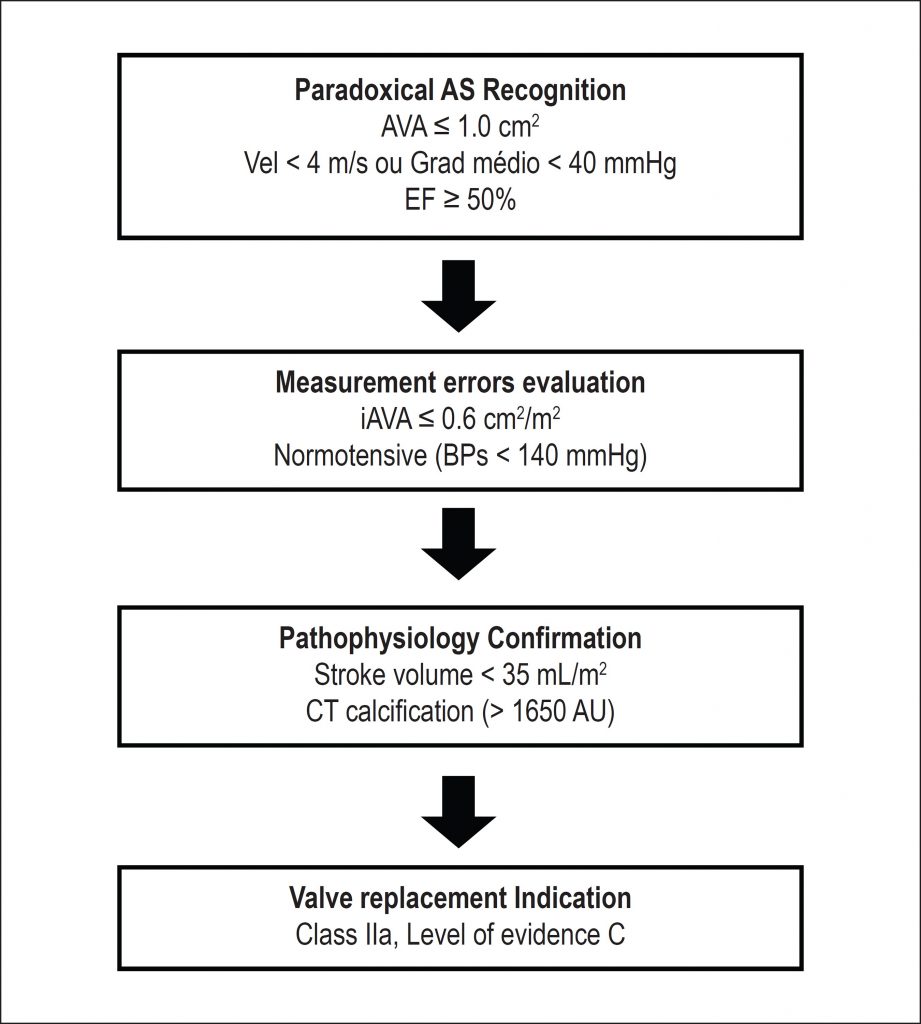Arq. Bras. Cardiol. 2018; 110(5): 484-486
Paradoxical Aortic Stenosis: Simplifying the Diagnostic Process
DOI: 10.5935/abc.20180075
Severe aortic stenosis (AS) is defined as a significant reduction of the aortic valve area (aortic valve area [AVA] ≤ 1.0 cm2) associated with evidence of left ventricular hypertrophic response (aortic jet velocity > 4 m/s or mean gradient between the left ventricle and the aorta > 40 mmHg).–3 However, as Minners et al. have demonstrated, inconsistencies in echocardiographic measurements are extremely frequent in daily clinical practice. In about 30% of the cases evaluated by AS, we found AVA ≤ 1.0 cm2, indicative of severe AS, with a mean gradient < 40 mmHg, suggestive of moderate AS. This dissociation makes it difficult to establish an adequate and definitive diagnosis to the patient with AS, fundamental point in the therapeutic decision making. If, on the one hand, patients with moderate AS do not benefit from valve intervention, those with severe AS require surgical aortic valve replacement or a transcatheter aortic bioprosthesis implant, especially if they are symptomatic.–
In 2007, Hachicha et al., in a pioneering work, defined such patients as having “paradoxical AS” (or low-flow, low-gradient AS with preserved ejection fraction). These patients present a pathophysiology similar to that of diastolic heart failure, with hypertrophy and left ventricular compliance reduction, leading to a “low-flow” state, defined by an ejected volume (stroke volume) of < 35 ml/m2 (stroke volume = Diastolic Volume – Systolic Volume / Body Surface).–
[…]
Keywords: Aortic Valve; Aortic Valve Stenosis; Echocardiography
6,375

